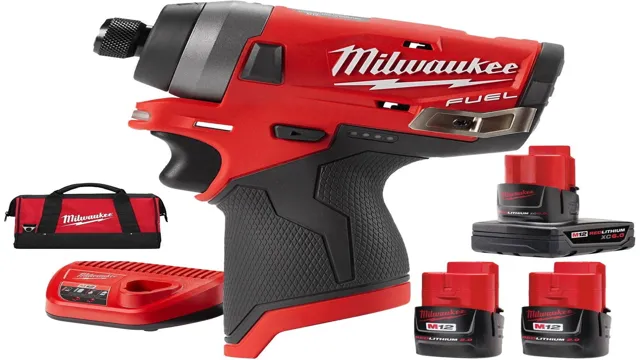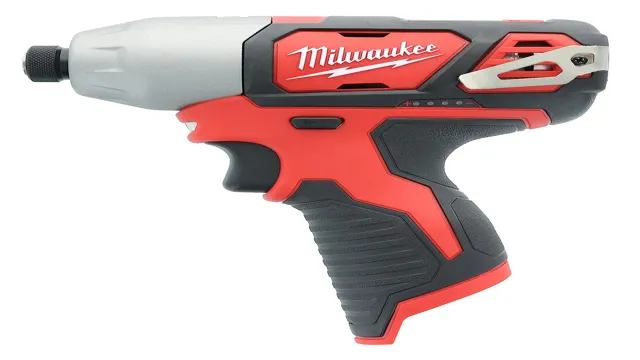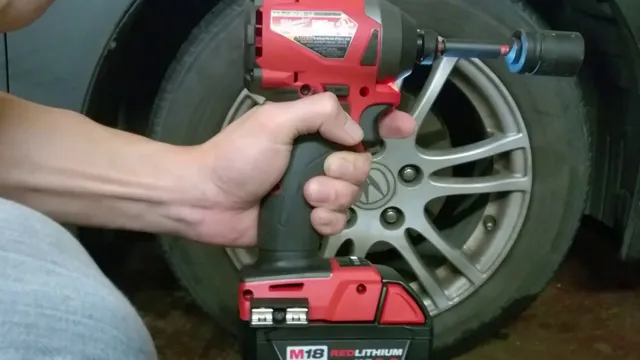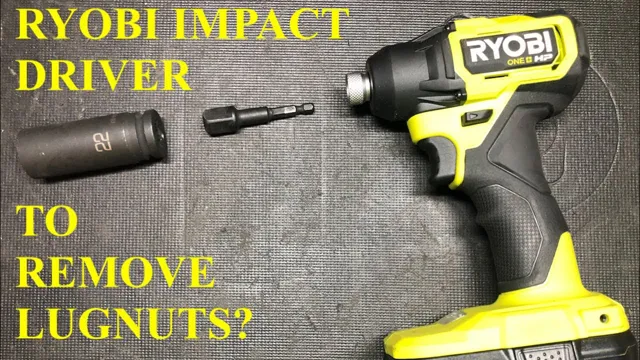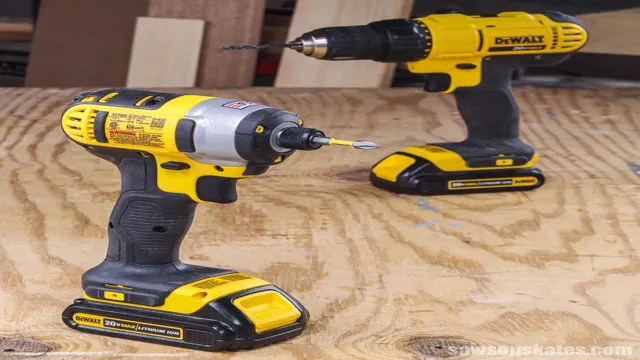How to Use Impact Driver with Sockets: A Complete Guide for DIY Enthusiasts
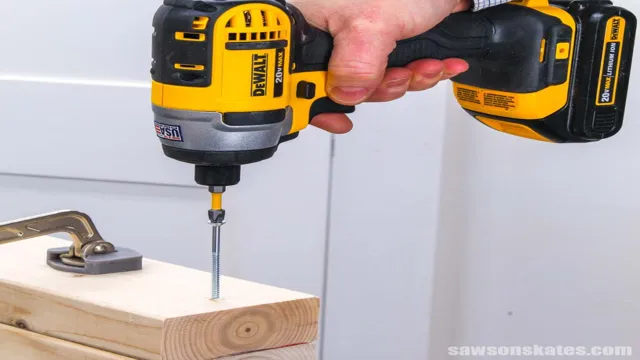
Looking for a powerful and efficient tool to make tough screw and bolt-driving jobs a breeze? Impact drivers are great for making quick work of big projects. But did you know that you can also use an impact driver with sockets for even more versatility? In this blog post, we’ll explore why an impact driver is an excellent tool for using sockets, how to go about doing it, and some tips for getting the most out of your impact driver and sockets. Whether you’re a professional contractor or a DIY enthusiast, using an impact driver with sockets is an excellent way to take your projects to the next level.
So let’s get started!
What is an Impact Driver?
If you’re a DIY enthusiast, you must have heard of an impact driver. It is a versatile tool that is designed to deliver high rotational torque to drive screws and other fasteners. However, using an impact driver with sockets requires some knowledge and practiced skills.
First and foremost, make sure that you have the appropriate socket size and that it fits your impact driver. Then insert the socket onto the driver’s chuck and make sure that it is secure. If you’re using a hexagonal socket, it will automatically lock into the driver’s chuck.
Next, line up the socket with the fastener and apply moderate pressure. Be careful not to apply too much pressure as it may snap the fastener or the driver. Also, use the appropriate torque setting to avoid overdriving or underdriving the fastener.
With these tips, you can use an impact driver with sockets effectively and efficiently.
Explanation of impact driver and its uses
Impact driver An impact driver is a powerful hand tool that delivers bursts of rotational force to tighten or loosen screws, bolts, and nuts. It is an essential tool for anyone planning to work on DIY projects or in construction sites. Unlike a regular drill, an impact driver combines both torque and speed to make work more efficient and less strenuous.
It is designed to convert the downward force applied by the users into rotational force through its internal mechanism. An impact driver operates similarly to a hammer drill but with higher rotational force, thus making it suitable for heavy-duty tasks. Its main advantage over a regular drill is that it significantly reduces muscle strain and fatigue.
With an impact driver, tasks that would typically take hours to complete can now be done in a matter of minutes.
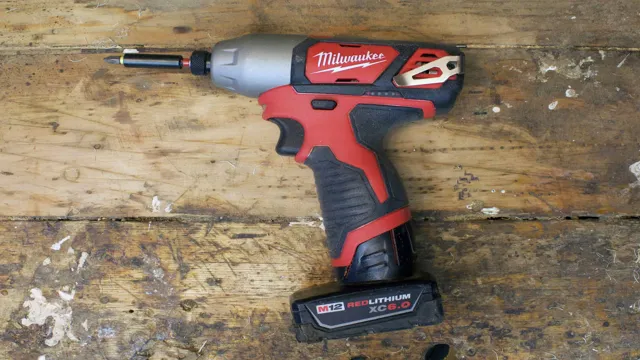
What are Sockets and Socket Adapters?
If you’re wondering how to use an impact driver with sockets, you first need to understand what sockets and socket adapters are. A socket is a tool that allows you to tighten or loosen nuts and bolts, and is attached to the end of a driver, such as an impact driver. Socket adapters, on the other hand, allow you to use sockets of different sizes on your driver.
It’s important to make sure that the socket fits snugly onto the bolt or nut you’re working on, to avoid any slippage or damage to the tool or the material you’re working on. You should also make sure that the socket adapter is securely fastened to your impact driver before use. With the right set of sockets and adapters, you’ll be able to tackle a variety of DIY projects with ease.
Explanation of sockets and how they work
Sockets and socket adapters are an essential part of modern technology, but what exactly are they? A socket is a unique endpoint in a network that allows two-way communication between devices. Think of it as a telephone number for your computer or device. Instead of calling someone directly, you send data through to their specific endpoint, known as a socket.
Socket adapters, on the other hand, provide compatibility between different socket types. Just like you need an adapter to use a European plug in an American outlet, a socket adapter enables communication between devices that might not be compatible with each other’s socket types. Both sockets and socket adapters play an important role in network communication, enabling devices to communicate and share information efficiently.
So next time you’re browsing the web, sending an email, or streaming a movie, remember that sockets and socket adapters are working hard behind the scenes to make it all happen.
Steps to Use Impact Driver with Sockets
Learning how to use an impact driver with sockets can be a game-changer for anyone who wants to save time and effort on their DIY projects. The first step is to ensure that you have the right size socket and adapter for your driver. Attach the socket to the adapter and then put it in the driver chuck.
Tighten it securely and you’re ready to go. It’s important to remember that the impact driver is designed to be more powerful than a regular drill, so start slow and build up speed gradually. Apply a good amount of pressure and make sure to keep the driver aligned with the screw or bolt to avoid stripping or damaging it.
With some practice and patience, using an impact driver with sockets will become second nature and make your DIY projects a breeze.
Step 1: Select the Correct Socket Size and Adapter
If you want to use an impact driver with sockets, there are a few steps you need to follow to do it correctly. The first and most important step is selecting the right socket size and adapter for your driver. This will depend on the specific model and size of your impact driver, as well as the size of the bolts or nuts you want to remove.
In general, adaptors are used to connect the socket to the driver, so you want to make sure you have the right size and type of adaptor for your sockets. Once you have the correct socket size and adaptor, you can start using your impact driver to remove or tighten bolts and nuts quickly and efficiently. Make sure to properly tighten the sockets onto the adaptor to avoid any damage to the socket or driver.
By following these steps, you can use your impact driver with sockets like a pro and save time and effort on your DIY projects or professional jobs.
Step 2: Insert the Socket into the Adapter
To use an impact driver with sockets, the second step is to insert the socket into the adapter. This adapter allows the socket to fit into the 1/4-inch hexagonal chuck of the impact driver. Hold the socket with one hand and insert the square end into the adapter while aligning the notches.
Once inserted, turn the socket clockwise until it clicks into place. You want to make sure that the socket is firmly secured before using the impact driver. If the socket is loose, it could slip off while in use and potentially cause harm or damage.
It’s essential to choose the correct socket size that fits the bolt or nut you’ll be working on. Using the wrong size can damage the socket, the bolt, and the nut and make the task more challenging to complete. Overall, using an impact driver with sockets is a versatile and efficient way to tackle DIY projects and home repairs.
Step 3: Attach the Adapter to the Impact Driver
To properly use an impact driver with sockets, you need to attach the adapter to the impact driver. This adapter helps convert the hexagonal chuck of your impact driver to a square drive, which can fit most sockets. To do this, look for the adapter that comes with your impact driver kit.
Once you have it, insert the adapter into the hexagonal chuck of your impact driver until it clicks into place. You can then attach your socket to the newly adapted chuck by sliding it on and locking it into position. With the adapter attached, you can now use your impact driver to tighten or loosen nuts, bolts, and other fasteners with ease.
Remember to always check that your socket is secure before using your impact driver and to remove the adapter when not in use to prevent damage to your tool.
Step 4: Tighten the Socket onto the Desired Fastener
Impact Driver With Sockets Step 4 of using an impact driver with sockets is to tighten the socket onto the desired fastener. This step is the most crucial as it determines the success of the job at hand. Use the correct size socket and align it with the fastener.
Make sure it fits snugly onto the fastener before attaching it to the impact driver. Using the impact driver, apply steady pressure and turn it in a clockwise direction until it reaches the desired tightness. The impact driver will do most of the work, so the pressure applied should be minimal.
It’s also important not to overtighten as this can damage both the fastener and the socket. With this step complete, you can move on to the next fastener, confident that the job is well done. Overall, using an impact driver with sockets is a straightforward process that can make any fastening task a breeze.
Tips and Tricks for Using Impact Drivers with Sockets
Using an impact driver with sockets can make your DIY projects a lot easier, but it’s important to use the right techniques to get the most out of your tools. First, make sure you have the right size socket for your driver. Impact drivers typically use 1/4″ hex shank bits, so look for sockets with a matching size.
Before attaching the socket, make sure it’s securely in place and won’t fall off during use. When starting to use the driver, apply gentle pressure and gradually increase speed as necessary. Be careful not to overtighten bolts or screws, as this can damage your materials or your tools.
With a little practice and attention to detail, you can quickly master using an impact driver with sockets and take your DIY skills to the next level.
Tip 1: Use the Correct Socket Size
Impact drivers are powerful tools that require the correct socket size to operate efficiently. When using an impact driver with sockets, it is crucial to use the right socket size to prevent slippage and damage to the tool. Most impact drivers come with different socket sizes, but it is essential to check the manufacturer’s instructions to determine the correct size.
Using the wrong socket size can cause the tool to overheat, increase the risk of injury and lead to poor performance. It is important to use the right socket size to ensure the impact driver works effectively and lasts longer. So, the next time you’re using an impact driver with sockets, make sure to use the right socket size to avoid any unnecessary mishaps.
Tip 2: Use a Magnetic Bit Holder
When it comes to using impact drivers with sockets, it’s important to have the right tools for the job. That’s where magnetic bit holders come in. These handy accessories keep your sockets firmly in place while you work, preventing them from slipping and causing damage to your tool or your materials.
They also make it easier to switch between sockets quickly and efficiently, saving you time and frustration on the job site. Plus, many magnetic bit holders are compact and lightweight, making them easy to carry with you wherever you go. So, if you want to get the most out of your impact driver and sockets, consider investing in a magnetic bit holder.
Your tools (and your sanity) will thank you!
Tip 3: Use the Right Amount of Force
Using the right amount of force when using impact drivers with sockets can make all the difference. One common mistake people make is using too much force, which can lead to damage or even breakages of bolts or nuts. It’s important to remember that impact drivers have a lot of power, so you don’t need to add much extra strength.
Another mistake to avoid is not using enough force. If the socket isn’t tightened enough, it could slip or strip the bolt or nut. It’s all about finding that sweet spot of just enough force to get the job done without causing damage.
So, be sure to pay attention to how much force you’re applying and adjust accordingly. With the right technique, you can use your impact driver with sockets like a pro.
Tip 4: Use Impact Rated Sockets
Impact Rated Sockets If you’re looking to get the most out of your impact driver, it’s essential to use impact rated sockets. These sockets are specifically designed to withstand the high torque and vibration that impact drivers produce. Regular sockets may crack or break under the pressure of an impact driver, which is why investing in impact rated sockets is crucial.
These specialty sockets are made from high-strength steel and have thicker walls than regular sockets, making them much more durable. It’s also crucial to ensure that the socket size matches the size of the driver’s anvil. Using the wrong size can lead to stripped hex sockets, causing frustration and a potential safety hazard.
So, when using an impact driver, always remember to use impact rated sockets to maximize performance and prevent damage to your tools.
Tip 5: Regularly Clean and Maintain Your Impact Driver and Sockets
Impact driver If you want your impact driver and sockets to last longer and work efficiently, it is important to maintain and clean them regularly. To maintain the impact driver, you can start by checking the screws and changing the brushes when necessary. You should also clean the tool regularly and lubricate the moving parts.
Additionally, it is important to check the sockets regularly and replace any that are damaged. To clean sockets, you can use a wire brush to remove any debris or rust. You can also apply some lubricant to protect them from rusting.
Regular maintenance will not only extend the life of your tools but also ensure their optimal performance. So, invest some time in maintaining your impact driver and sockets, and you’ll continue to experience perfect results every time.
Conclusion
Just like a superhero and their trusty sidekick, an impact driver and socket set are a dynamic duo that can conquer any task at hand. With a little bit of know-how and a whole lot of torque, using an impact driver with sockets is a snap! Whether you’re tightening lug nuts or building a deck, just remember to choose the right socket size, set your torque setting, and let the impact driver do the heavy lifting. So, grab your tool belt and get ready to be the hero of your next project with your trusty impact driver and sockets by your side!”
FAQs
What is an impact driver and how is it different from a regular drill?
An impact driver is a power tool that delivers high torque with short bursts of force. It is specifically designed to drive screws and bolts faster and with more ease than a regular drill. The main difference between the two is their driving mechanism – an impact driver uses rotational force combined with concussive blows to drive screws and bolts, while a regular drill uses only rotational force.
Can I use sockets with an impact driver?
Yes, you can use sockets with an impact driver. However, it is important to use impact-rated sockets that are designed to withstand the high torque produced by the tool. Using regular sockets can lead to their breaking and posing a safety risk.
What size sockets can I use with an impact driver?
The size of the socket you can use with an impact driver depends on the size of the driver itself. Most impact drivers are compatible with 1/4-inch hexagonal shank bits, so you would need to use socket adapters with 1/4-inch female hexagonal drives to use sockets of different sizes with an impact driver.
Can I use an impact driver to remove bolts or nuts?
Yes, an impact driver can be used to remove bolts or nuts. However, you need to make sure that the size of the socket matches the size of the bolt or nut you want to remove. If the bolt or nut is corroded or stuck, you may need to use an impact wrench instead.
How do I adjust the torque on my impact driver?
Most impact drivers do not have a torque adjustment feature. Instead, they are designed to deliver maximum torque with each trigger pull. If you need more control over the torque, you may want to consider using a torque limiting extension or adapter with your sockets.
Can I use an impact driver to drill holes?
Although it is possible to use an impact driver to drill holes, it is not recommended. Impact drivers are designed to deliver high torque, which is great for driving screws and bolts, but not for drilling. You are better off using a regular drill or a hammer drill for drilling.
How do I maintain my impact driver and sockets?
To maintain your impact driver and sockets, you should clean them regularly and inspect them for any signs of wear or damage. Make sure to use impact-rated sockets and replace them if they show any signs of cracking or distortion. You should also lubricate your impact driver periodically to ensure smooth operation and longevity.

